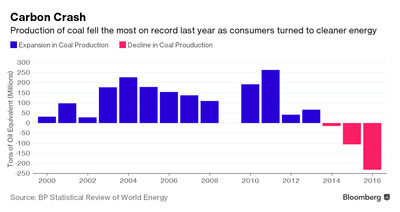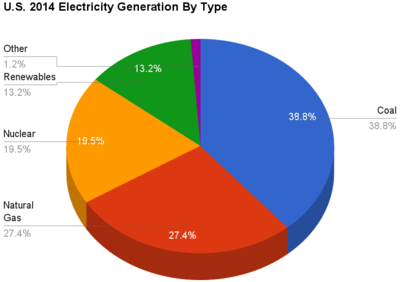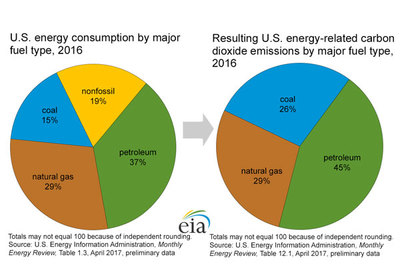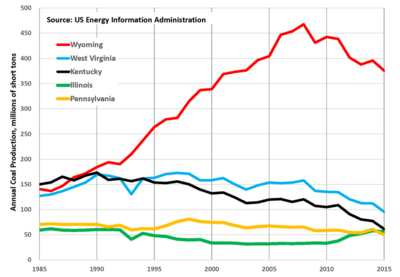Coal
Types of Coal
Coal, like oil, consists of a wide variety of components, and those components are present in a wide variety of concentrations within various coal deposits. In order to simplify descriptions of coal in its multiple forms, four main categories of coal have been commonly used:
- Anthracite - contains 86-97% carbon
- Bituminous - contains 45-86% carbon
- Subbituminous - contains 35-45% carbon
- Lignite - contains 25-35% carbon
Sources
In a way similar to petroleum, production of coal will reach a peak, after which production will enter into a terminal decline. This will occur for several reasons - diminishing energy quality of remaining coal resources, competition from alternate sources of energy, government proscriptions on greenhouse gases and other types of pollution, and increasing coal prices as the "easy coal" is depleted.
There will be two peaks, one based on bulk quantity of coal and the other based on the amount of energy available from the coal produced. Since the highest quality coal tends to be mined first and depleted, it is anticipated that the energy peak will occur substantially before the bulk quantity peak.
Coal peaks will occur at different times in different countries. Some countries have been through both peaks, while others are still producing at increasing rates.
Production

The global production of coal decreased in 2016 by a record amount. Both China and the US had marked declines in the use of coal. This is in strong accord with goals of the Paris Climate Agreement, as cleaner-burning natural gas rises to greater use and an increasing use of renewable fuels becomes more widespread.
Consumption

Over 90% of the coal used in the U.S. is used to generate electricity. Industrial uses for coal include the production of steel, cement and paper. In 2014 coal accounted for 39% of the electricity generated in the U.S.
Environment

Coal is both an important source of energy for the production of electricity and the most polluting of the fossil fuels (coal, petroleum and natural gas). Some of the environmental challenges in the use of coal for generating power are:
- Both mining and burning coal results in the release of greenhouse gases, believed by many to be a significant cause of global warming.
- Its waste products include harmful heavy metals, including some that are radioactive.
- The mining of coal releases acids into ground water and the atmosphere that can cause harm to humans, crops, and wildlife.
- The land at and near mining sites can become unfit for other purposes after mining operations are completed and terminated.
- Mining operations can severely disrupt animal and plant ecosystems, sometimes at extended distances from the mine itself.
